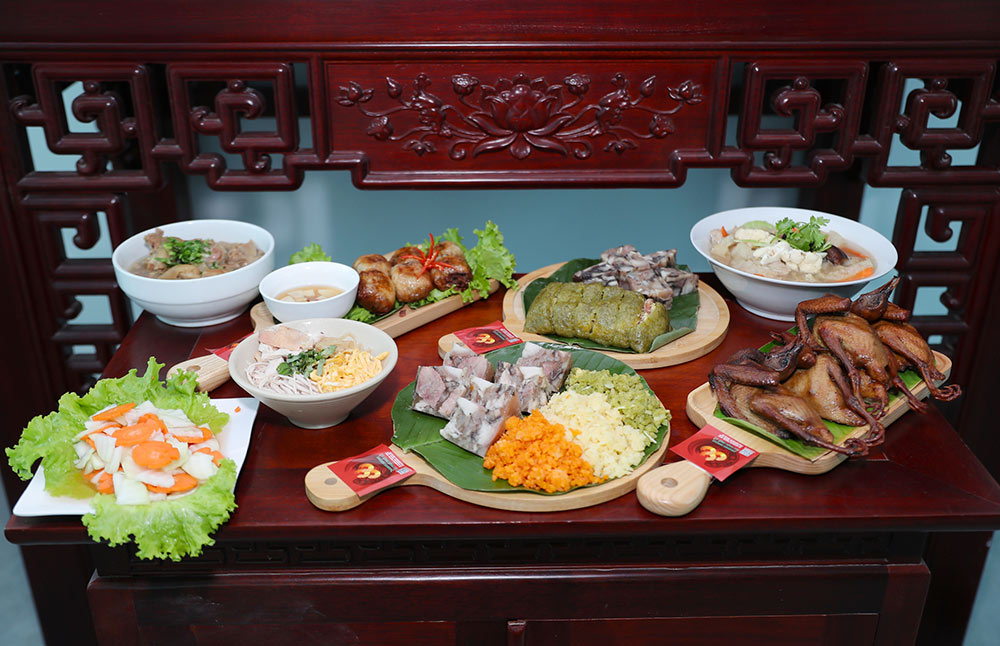According to Vietnamese beliefs, preparing the offering tray for the full moon day of January is very important, because "offering all year round is not as good as the full moon day of January".
According to the book "Traditional Vietnamese Prayers" - Culture and Information Publishing House, the homeowner should prepare the following offerings:
Incense: Incense has a fragrant smell.
Flowers: Fragrant flowers (no restrictions on flower names and quantity).
Tea: Tea water exudes the aroma of six flavors: bitter, spicy, sour, astringent, salty, and sweet, the six flavors that nourish all living beings.
Fruit: Any quantity, no restrictions on 2 or 4 fruits.
Ripe fruit should be offered because it has a fragrant aroma for the deceased to enjoy. Green fruit does not have a fragrant aroma (to avoid turning the altar into a storage place).
The offerings do not kill animals, do not burn votive paper, votive paper, or votive paper.
The offering tray should have all the flavors: sour, spicy, salty, sweet, and rich.
The saltiness of the dipping sauce, the spiciness of the chili; the sourness of the salad or pickles; the sweetness of the cake; the richness of the green bean, sesame and peanut filling... symbolize the harmony of yin and yang in life.
The offering tray for the full moon of January has 5 colors symbolizing the five elements: red (fire), green (wood), black (earth), white (water) and yellow (metal).

According to ancient beliefs, the full moon offering tray in January has 10 dishes, including dishes from all four directions: rivers, mountains, seas, and plains. All of these create a full offering tray, praying for peace and safety, and driving away any bad luck if any.
Depending on local customs and economic conditions of each family, the dishes on the full moon offering tray in January are different.
The dishes on the offering tray can be adjusted to be suitable, complete, and neat, showing the children's respect for their grandparents and ancestors.
Suggested meaningful full moon offering tray of 10 dishes in January.
Sticky rice with Chinese sausage or banh chung is the first dish to appear on the offering tray on the full moon day of the first lunar month. The rice grains used to make sticky rice or banh chung symbolize the sky, like a wish for everything to be full and round in the new year.
Boiled chicken is an easy-to-find and easy-to-prepare offering. The image of a rooster not only represents majesty but also contains many good meanings. Chicken is a familiar dish that is indispensable during holidays and Tet.
Five-color salad or kohlrabi and carrot salad carved into flowers is a refreshing dish to avoid feeling full, served with banh chung and meat.
Stir-fried beef balls with mixed vegetables or beef ball soup is a traditional dish during the traditional Vietnamese New Year holidays.
Fried shrimp. The brightly colored shrimp is a dish that symbolizes the ocean.
Crispy fried fish or steamed or braised fish are representative dishes of the river region.
Five-color wooden soup. Red represents the fire element, green the wood element, black the earth element, white the water element, yellow the metal element.
A bowl of vegetarian mushroom noodles.
Nem or Hanoi nem is a familiar dish during important holidays.
The dipping sauce has enough sour, spicy, salty and sweet flavors to symbolize the diversity in life.
In the opinion of many people, in addition to carefully preparing the full moon offering tray in January, families should also perform the ceremony at noon. This is the time when Buddha appears, so people will "get what they wish for", according to Vietnamese spiritualism.
The full moon of January, also known as Tet Nguyen Tieu, takes place from the night of the 14th (before the full moon) to the end of the 15th (full moon night) of January.
The full moon of January 2025 falls on Wednesday, February 12, according to the Gregorian calendar. This is a regular day, workers and students do not have a day off for the Lantern Festival.
In the book "Learning about Eastern culture for 365 days" (Thanh Hoa Publishing House), author Thien Nhan mentioned some good time frames to worship on the Full Moon of January 2025 as follows:
January 15th Lunar Calendar (Full Moon of January): Mao hour (5am-7am), Ngo hour (11am-1pm), Than hour (3pm-5pm), Dau hour (5pm-7pm).
January 14th Lunar Calendar: Dragon Hour (7am-9am), Horse Hour (11am-1pm), Goat Hour (1pm-3pm), Dog Hour (7pm-9pm).
January 13th Lunar Calendar: Mao hour (5am-7am), Ngo hour (11am-1pm), Than hour (3pm-5pm), Dau hour (5pm-7pm).











